|
|
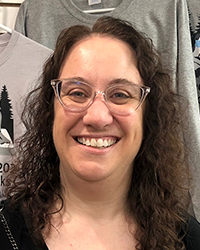 Jen Jen
|
 |

|
|
Bittersweet
Susan Cain
I'm a sucker for social science books and Susan Cain's new "Bittersweet" is so, so good. It’s based on a niggling question that over time blossomed into enough material for a book. The author wondered why she liked sad music so much. It turns out that most of us like sad music—not all the time of course, but humans are drawn to experiences that move us in emotional ways and make us feel connected. The author delves into the scientific reasons why sadness is in fact not only inevitable, but necessary. So often from the ashes of a person's tragedy rises an otherwise impossible creative contribution, hence the term bittersweet. The author also dips her toe (her pen?) into the waters of spirituality—Buddhism, Hinduism, Christianity, and Judaism are the most prevalent in the book. Towards the end of the book is insight about human perspectives depending on the (perceived) closeness of death. The author makes a deep dive and allows the ripples from it to spread in a logical, meaningful way. This book has given me a lot to consider, surprised me in that others also like sad music (I may have listened to Gillian Welch's Six White Horses repeatedly in my life), and I look forward to sharing this book with others, knowing the thoughtful conversations it will create among readers.
Note: this book will be released April 5.
|
|
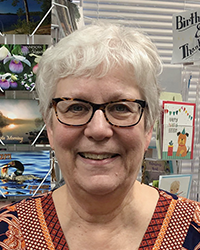 Sally Sally |
|
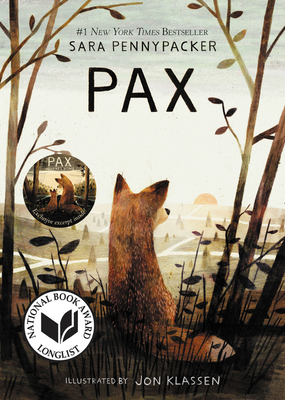
|
 |
Pax
Sara Pennypacker
Jen and I strongly advocate that adults periodically read literature written for children and young adults. Rather than being childish, children’s books often contain the same complex ideas about life that adult novels do. In turning to these books as adults we remind ourselves what it’s like to be a kid. And, just like when we read books for adults, we open ourselves to different perspectives on the world, gain new understandings, and are entertained. If there are young people in your life, you have an opportunity to connect with them though literature.
We often include such books in our retreats. This month, we’ll be Reading Pax and Fox and I for our spring Reading Retreat. Each book is about a deep friendship between a human and a fox.
Pax takes places in a dystopian setting. His father forces a 12 year old boy to abandon his pet fox, to whom he has a deep bond. The two friends spend much of the book searching for each other against the backdrop of a war which is destroying life as they have known it. We chose the book for the retreat a few months ago, not anticipating that it would resonate with what is going on in Ukraine.
As difficult as the situation is in the book, the boy learns the importance of knowing oneself, trying to rectify mistakes, and doing what you feel is right, even when it’s difficult.
I look forward to discussing this book at our retreat.
|
| |
|
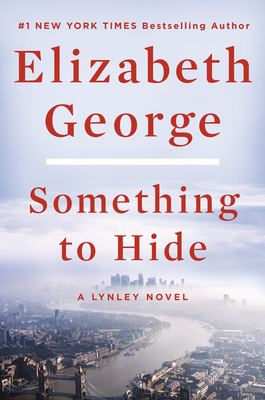
|
|
Something to Hide
Elizabeth George
I’m a great fan of Elizabeth George’s procedural series featuring Thomas Lynley and Barbara Havers, and each new one pushes other reading to the side. I recently spent time in with Lynley and Havers as they pursued a particularly complicated case, one which is politically charged and somewhat of a departure for George. At the heart of the story is the practice of female genital mutilation in London, primarily among members of the Nigerian immigrant community. The story includes an investigation into the murder of one of Lynley’s detectives, many red herrings, the clash of classes which is typical of George’s writing, and appearances by Deborah and Simon St. James, old friends of Lynley’s. Readers will be challenged to keep the many threads of the story sorted out in this satisfying addition to the series. |
| |
|
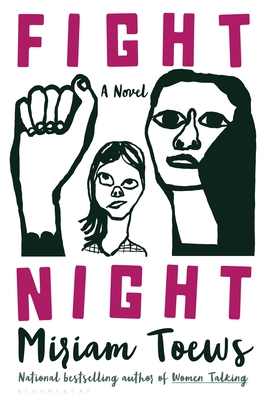 |
|
Night Fight
Miriam Toews
The narrator of Night Fight is a nine-year-old girl, Swiv, and the book is actually a long letter to her absent father. A child narrator and an extended letter are hard devices to pull off, but Toews does so beautifully. In addition to Swiv, her household consists of her mother, a pregnant actress in her third trimester who is in rehearsal for a new play and her grandmother, whose heath is fragile but whose spirits are high. Swiv has been expelled from school for an extended period for fighting and is being nominally home schooled by her grandmother. In fact, Swiv is her grandmother’s caretaker. The grandmother’s life has been full of hardship, including the deaths by suicide of her husband and daughter, a recurring theme in Toews’ work. Her high spirits and optimistic outlook are a deliberate decision, and by example she teaches Swiv a great deal about life. The book is funny, sad, and poignant—sometimes all at the same time. I listened to the book on Libro.fm, which greatly enhanced my experience of it.

|
|
 |
 |
 |
|
|
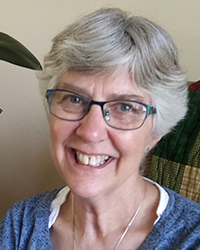
Ann |
|
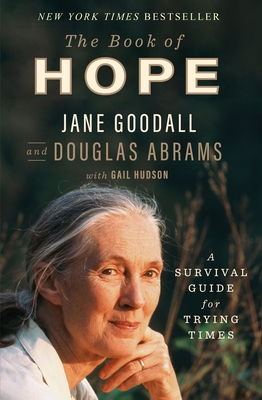
|
|
The Book of Hope: A Survival Guide for Trying Times
Jane Goodall and Douglas Abrams
The Book of Hope is a culmination of interviews between Douglas Abrams and Jane Goodall. It is a memoir describing Jane's early career working in the field, collecting information about chimpanzees, and explaining how she eventually became a leader in the conservation movement and a public speaker. In addition, the book discusses current world problems, including the covid pandemic and environmental concerns. While the facts presented are daunting, Jane Goodall shares reasons for readers to be hopeful and describes how she became a messenger of hope personally and professionally. I found The Book of Hope to be informative and inspirational.
|
| |
|
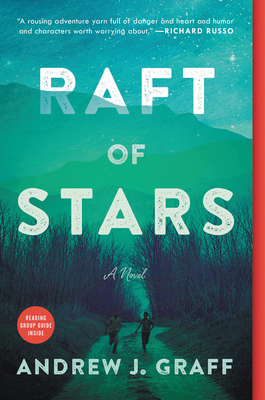
|
|
The Raft of Stars
Andrew Graff
Fish spends his summers with his grandfather, Teddy, in the small town of Claypool, located in northern Wisconsin. Fish spends much of his time with his friend Bread. The ten-year-olds spend their days exploring and doing whatever they can to avoid Bread's abusive father. Then comes the night that changes everything. Witnessing Bread's father holding him by the collar, Fish grabs a gun from the table and shoots. Believing that Fish has killed Bread's dad, the two boys take off for the woods, ultimately hatching a plan to escape by river. Both adventure and danger lie ahead. Fish's grandpa and the local sheriff head out to search for the boys. Fish's mother and a local gas station attendant/poet are not far behind as they embark on a search of their own. All want to find out what happened to Bread's dad and return the boys to safety. The Raft of Stars is a mystery and an adventure story about coming to terms with the realities in our own lives and looking toward a positive future. |
|
|
|
|
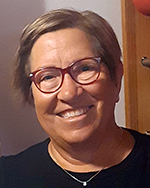
Doni |
 |
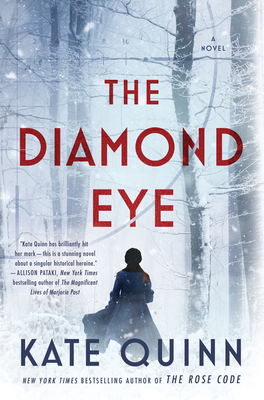
|
 |
The Diamond Eye
Kate Quinn
This book is what Kate Quinn does so well: historical fiction with beautifully researched background and rich characters.
Mila Pavichenko is a young Russian single mom who takes up target practice so she can be father to her son as well as mother. From the start, the instructor teaches as though all students are being trained to be snipers, while she maintains she is just learning about her gun and to shoot targets. When Germany invades Russia, however, she immediately enlists.
The book depicts her time on the front line; the conditions in the camps, the relationships she forges and the kills she makes. She is nicknamed “Lady Death” due to her success.
Intermingled throughout the book, chapters describe her time in the United States where she is sent as part of a propaganda delegation to convince the US to come to the aid of their beleaguered allies.
I was inspired to do a Google search and found photos of Mila with Eleanor Roosevelt. They traveled across the country together with a Russian delegation, giving speeches and meeting with influential people and groups to further the Russian cause.
The end of the book departs from Mila’s actual story, but is an exciting conclusion, nonetheless.
This is the first World War II book that I have read that was written from the Russian viewpoint, and it was fascinating. The Diamond Eye is my favorite Kate Quinn book so far, I strongly recommend it!
|
|
| |
 |
 |
 |
|
|

Gail |
|

|
|
This Time Next Year We'll be Laughing: A Memoir
Jacqueline Winspear
Jacqueline Winspear is the author of the bestselling Maisie Dobbs mystery series. Maisie works security for the French underground during the war. If you know the series, you'll be interested in reading the author's memoir. She grew up in England and her family were great storytellers about their war experiences. Or read the memoir first and then you'll be sure to want to try her series!
|
| |
|
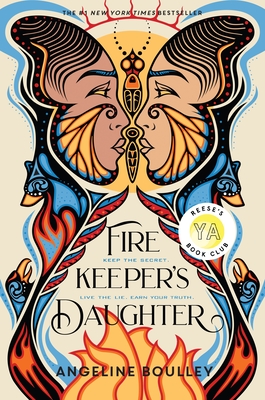
|
|
Firekeeper's Daughter
Angeline Boulley
18-year-old Duanis Fontaine sees the shocking murder of her best friend, Lily. Afterwards, she says yes when FBI agents ask her to be a confidential informant. They need her help to investigate the rise in a new lethal meth being distributed on her Native American Reservation near Sault St. Marie. Jamie is on her brother's hockey team and she is drawn to him. He is also working for the FBI so cannot even tell her his real name. This is a fast-moving story, full of suspense. It is also a chance to learn about Ojibwe beliefs and traditions, which are a crucial part of the story. Highly recommended. |
| |
|
|
|
|
|
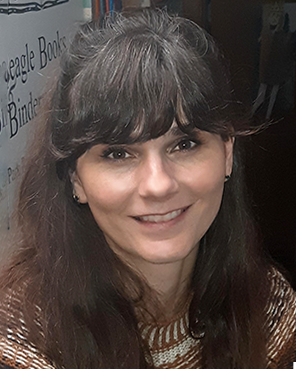
Gina |
|

|
|
Elena Knows
Claudi Pineiro
Translated from Spanish by Frances Riddle
This story takes place over one day which Elena spends trying to find the help she needs to figure out how her daughter Rita died. Rita was found hanging from the church belfry. Everyone believes it was suicide, but Elena knows her daughter would never have gone to the church on that particular day.
The day is complicated by Elena’s late-stage Parkinson’s disease. She has to plan her journey around precise timing of her medications. As the day and her travels unfold, we learn about Elena’s life, the ideas she has of her daughter and the events leading up to her daughter's death. We get to see how Parkinson’s rules her life and the lives of those close to her.
The format of the book has few paragraph breaks and lacks quotation marks around dialogue. This leaves the reader with a feeling of discomfort, not knowing when the next break will be, or who is saying which line during dialogue. At first, I found it frustrating, but soon realized the author was doing this on purpose to help the reader get a sense of how Elena feels all the time. A loss of the normal conditions of life.
This book touches on multiple topics; how the health care and insurance systems, make us jump through hoops, women’s rights to their bodies, people's assumptions of others based on external information. All packed into 143 pages. |
| |
|
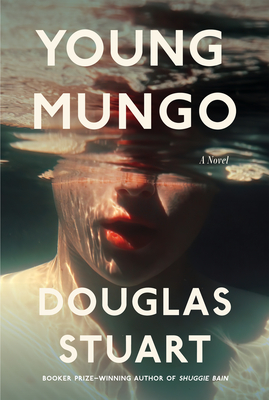 |
|
Young Mungo
Douglas Stuart
This is a sad story. It is one of those stories that, as you are reading it, you stop and realize that these kinds of things happen every day.
The story has two timelines that merge together.
We have Mungo, our tender-hearted young man who is doing his best in the world. His mother is a part time drunk desperately trying to find a good man. His older sister Jodie sees another kind of life that is just within her reach and his older brother Ha-Ha (Hamish) is the leader of the neighborhood Protestant gang.
Mungo cares deeply for each of his family members. He is a boy who just wants to love and be loved, but he often feels alone. He meets James, a Catholic who loves pigeons. They form an unlikely friendship that grows into love. For many reasons, this is not allowed.
The second part of the story takes place when Mungo’s mother sends him on a fishing trip with two men that neither of them know beyond having met them at an AA meeting. The purpose of the trip is for Mungo to spend some time with men and “learn about being a man.”
The book covers a wide array of troubling topics such as toxic masculinity, homophobia, poverty, sectarianism, and alcoholism, to name a few. This is a hard read, but it’s good to read about characters like Mungo, even if it leaves your heart aching. |
|
| |
|
|
|
|
|

Hannah |
|
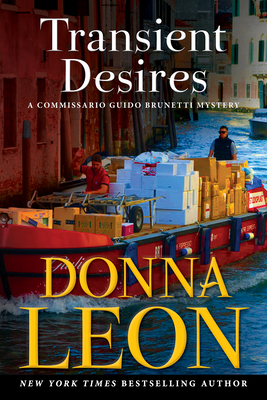
|
|
Transient Desires
Donna Leon
This is another Commissario Guido Brunetti mystery, just released in paperback. If you like Louise Penny’s books, I highly recommend Donna Leon. The Brunetti novels are set in Venice and provide insights into the lives of Venetians away from tourists’ limited views. The books don’t need to be read in order like Penny’s; things don’t change radically from book to book; the characters stay pretty much the same. But this one, which came out last year, has hints of how Covid has affected the city. The next book, Give Unto Others, looks like it will have more about Covid. I may have to invest in the hardbound instead of waiting for the paperback. The books all expose problems Venice is facing, but they also extol the contributions good people can make. Brunetti and his family and colleagues are old friends. I so enjoy reading about them, for example how the family sits down together at lunch, coming home from work or school for a home-cooked meal. There is a lot we could learn from the real Venetians.
|
| |
|
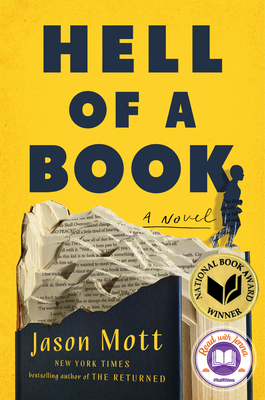
|
|
Hell of a Book
Jason Mott
This is a tale of two characters. The novel opens with a little boy with impossibly black skin, which is described as beautiful throughout the novel, but which causes the bully on the school bus to nickname him “Soot.” Soot’s loving parents have taught him the mantra “I am unseen. I am safe.” He strives to become totally invisible.
The second character is introduced as he runs, naked, in a hotel hallway, being chased by an angry husband. He’s a writer on a book tour to promote his first novel, Hell of a Book. He’s a man with a condition: he cannot distinguish between things he imagines and things that are real.
Perhaps there’s a third character: a child has been killed by a policeman, and the writer encounters protestors in city after city. They demand that he somehow use his words to help.
This truly is a hell of a book. By turns it’s funny and it’s anguished. The writing is stunning: I kept getting caught by nuggets of wisdom or just nuggets of brilliancy in Mott’s use of language. I slowed down to savor this special book.
|
| |
|
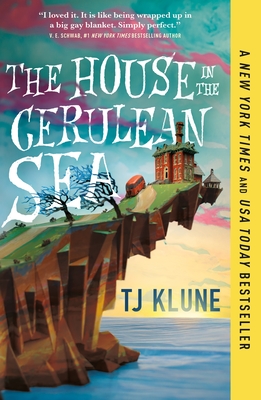 |
|
The House in the Cerulean Sea
T.J. Klune
An unassuming, non-descript man with thinning hair and a growing waist is a caseworker who inspects orphanages for magical children. At first, I found this book a little heavy-handed: the administration’s title is “Extremely Upper Management.” But soon he’s sent to visit a very special orphanage, and every page after that is a delight. It’s whimsical, but packs a punch talking about tolerance, responsibility, courage, and, most of all, love. I highly recommend it. |
|
| |
 |
 |
 |
|
|
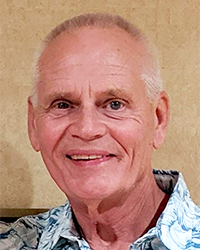
Lee |
|
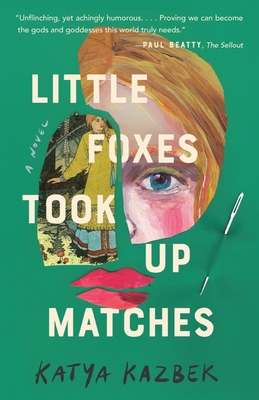
|
|
Little Foxes Took Up Matches
Katya Kazbek
Trigger Warning: This book does contain two or three instances of child sexual abuse. It is not overly graphic but disturbing, nonetheless.
This is an unpredictable coming-of-age story told with humor born of absurdity and deep compassion.
Mitya, a young boy in 1990s Moscow, is living in a run-down one-bedroom apartment with his parents, his grandmother, and an alcoholic cousin. Mitya is somewhat feminine in appearance and is not entirely certain if he is a boy or a girl or maybe both.
Despite neglect and abuse at home, Mitya finds friendship and understanding with Valerka, a street drunk who feeds the crows, and with Marina, a young and struggling Ukrainian woman who becomes his best friend.
I think there is probably much of the novel that I have missed, as I was unfamiliar with the Russian folklore surrounding Koschei the Deathless; the punk bands and artists of Moscow of that era (Viktor Tsoi, Yanka, Straw Raccoons ... with guitarist Anya Bernstein who is now a professor at Harvard); and Russian words and phrases. (For example, ebaniy pizdets, which in the Cyrillic is ёбаный пиздец, which means ... oh ... never mind ... a vulgarity. Another example is Devchonka, which is Russian for girl or little girl, but also used for an effeminate or gay man.) On the other hand, I never felt like I was lost ... just that maybe I would love this even more if I had a more comprehensive background.
In the end, this is a story of one boy and his family, living in near poverty in a country in political turmoil and economic ruin; and it is masterfully well done.
Note: This book will be released April 5.
|
| |
|
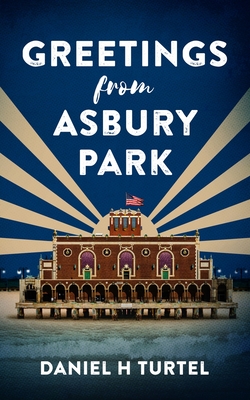 |
|
Greetings from Asbury Park
Daniel H. Turtel
Greetings from Asbury Park follows the interconnected lives of several residents of Asbury Park, a New Jersey seaside city with tourists, summer residents, and permanent residents. The main characters are Davey Larkin, the son of the late Joseph Larkin; his half-brother Casey Larkin, whose mother was Joseph’s mistress; and their half-sister Gabriella Walker, whose mother was a housecleaner for Joseph.
The author provides a series of vignettes, moving among these characters and a half-dozen others that are meticulously crafted and carefully woven together to create the narrative.
Most of the characters are ones that are occasionally quite distasteful or worse, yet I can see myself in each of them, too.
If you are looking for an action-adventure plot, this is not for you; but if you enjoy fine writing and character exposition, you will love this book.
Note: This book will be released April 5.
|
| |
|
 |
|
The Candy House
Jennifer Egan
This is a “sibling sequel” to A Visit from the Goon Squad, winner of the 2011 Pulitzer Prize, which I have not read ... yet. The author has said, “The Candy House follows a number of its peripheral characters into their own futures and pasts to create an independent work with a new set of preoccupations and center of gravity.” In reading, I did not feel disadvantaged by a lack of background.
The driving factor in The Candy House is the invention of a device that can allow people to digitize, store, and share their consciousness. Think of it as social media on steroids. There is an extended cast of characters that we meet at different points in their lives. (I really should have used a notebook to keep track, although there was joy in suddenly realizing “Oh, that is the daughter who ...”)
The title comes from this sentence, “Never trust a candy house. It was only a matter of time before someone made them pay for what they thought they were getting for free.” We all know that Facebook is “free,” but there certainly is a price.
If you wish to read a novel that follows “The Rules,” this is not it. At all. There is a chapter consisting entirely of text messages. There is not a fixed chronology. The focus swings to something new and then swings back. It is all, however, wonderfully written and fully engaging. Portions are laugh-out-loud funny. And the characters are so very real that we all know some version of “that person.”
Note: This book will be released April 5.
|
| |
|
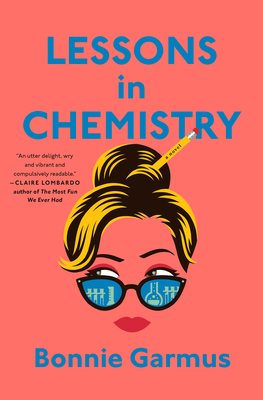 |
|
Lessons in Chemistry
Bonnie Garmus
Elizabeth Zott has, in the early 1960s, managed to earn a master’s degree in chemistry. She leaves grad school without a PhD after being sexually assaulted by a professor and denied justice. She ends up at Hastings Research Institute, where she finds the love of her life, a Nobel-nominated chemist.
Life happens, though, and she ends up creating and hosting a wildly popular television cooking show.
Much of the unfairness and inequality that Elizabeth faces can still be seen now, 60 years later. The honest reader can recognize every single act of jealousy, bias, and inequality that is portrayed in the book. (And I am a man who is willing to admit that I am almost certainly tone-deaf to many of the more subtle injustices that women experience daily.)
But do not think this is a tedious sermon on misogyny. I found myself laughing aloud at numerous places throughout the book. And there are wonderful characters in addition to Elizabeth, and many of the women find that they are more than what they have been told they are. (I must state, too, that Six-Thirty is a dog who deserves a great name.)
Note: This book will be released April 5.
|
| |
|
 |
|
The Sea of Tranquility
Emily St. John Mandel
Emily St. John Mandel’s latest novel is Sea of Tranquility. For those of you who loved Station Eleven and The Glass Hotel, you will not be disappointed. And readers new to her work will find it both highly enjoyable and a springboard to her other books.
I think reading (or re-reading) The Glass Hotel may enhance Sea of Tranquility. That said, it can be enjoyed without doing so, but it is a “companion piece” (vs sequel) to that novel, with both familiar settings and characters appearing. [Full disclosure: I did not re-read The Glass Hotel, although now I will.]
The plot involves colonies on the moon and beyond, pandemics (including what it is like for an author on tour generally and during a pandemic), time travel (the story swirls within the years 1912-2401), and simulation theory. Even so, it is not about those things, but instead about the characters ... how they deal with family, loss, loneliness, and belonging (or not belonging). In particular, the book is tied together by the travels of Gaspery-Jacques Roberts, an unlikely hero.
Note: this book will be released April 5.
|
| |
|
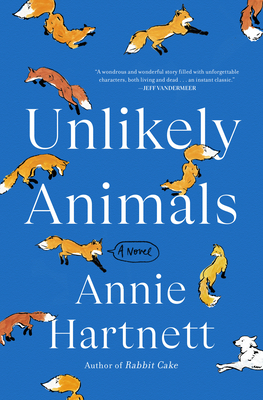 |
|
Unlikely Animals
Annie Hartnett
This is the story of Emma Starling, who returns to her hometown of Everton, New Hampshire. She had gone to college in California but then not to medical school, as her family believed. She has returned home because her father is dying of an unknown brain disease.
The residents of the Maple Street Cemetery provide the narration for this story.
The novel has a cast of unique individuals, including the ghost of a long-dead naturalist, a missing young woman who was Emma’s best friend in high school, Emma’s brother who is back from another stint in rehab for opioid addiction, a small class of elementary students with unhappy pasts, and—of course—Emma’s father.
There is nothing at all typical about this novel. It is, in fact, quite bizarre, but it also carries truth and honesty as it deals with the successes and failures that are a part of family and friendships.
Note: this book will be released April 12.
|
| |
|
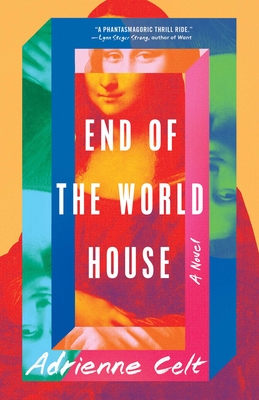 |
|
End of the World House
Adrienne Celt
Bertie and Kate are best of friends, but Kate has decided to move away. As a sort of good-bye trip, they vacation in Paris. This is likely not just their last trip together, but the last trip either will be making in a world that has momentarily paused a slow-rolling apocalypse of limited nuclear war and increasingly harmful climate change.
While in Paris, they are invited to visit the Louvre for a private visit on a day that it is closed. During this visit, they confront one another about the flaws in their friendship. Bertie leaves her friend alone, but then cannot find her.
If you have seen Groundhog Day, you are familiar with the Many-Worlds Interpretation that holds there are many worlds which exist in parallel at the same space and time as our own. This is where these two young women find themselves.
This book has a creative and interesting plot, and it is definitely a must-read for fans of Groundhog Day, although I don’t know if I ever really figured out Dylan’s (Bertie’s love interest) role.
Note: this book will be released April 19.
|
|
| |
|
| |
|
|
|

Tim
|
|
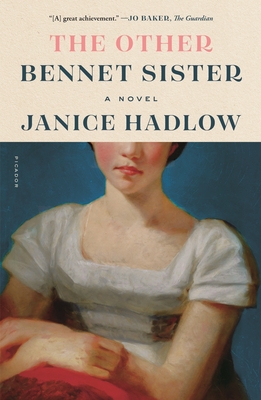
|
|
The Other Bennet Sister
Janice Hadlow
The Other Bennet Sister takes for its main character Mary Bennet, from Jane Austen's Pride and Prejudice. You may remember her as being the middle sister of the five Bennet daughters. Bookish, socially awkward, overlooked and rather plain looking, I've come to realize her character was handled by Austen, in a somewhat dismissive 'mean girl' manner. Gasp! Yes, I was shocked to discover this too! Only slightly less surprising was to find Reverend Collins (certainly one of the silliest characters in fiction), a loving husband, parent, with a serious interest in education regardless of gender. If you enjoy Austen, you'll find this book a treat. |
| This month has been interesting because the books I read share a similarity: they are both stories that expand on minor characters in famous stories. |
| |
|
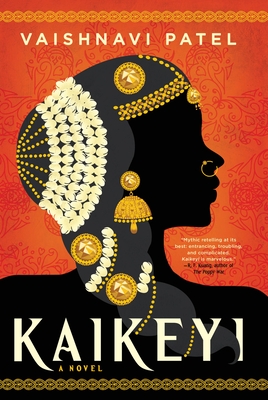
|
|
Kaikeyi
Vaishnavi Patel
In a similar manner, Kaikeyi takes a minor character from the Indian epic, Ramayana. Maybe less well known to Western readers, it's the epic mythological story of the God Rama, and has to do with his rearing by his stepmother the demigoddess Kaikeyi. Traditionally she is cast in the character of a villainess. However, Patel shows us her as a nurturing influence on the rather immature god Rama, who as a young boy, is too certain of his divine judgment being always correct. She thwarts his impetuosity and imposes a period of reflection on his responsibility as a god. The book is something along the lines of the top selling book, Circe. What I especially liked, is the story being an opportunity to read outside the genre of Western based Myth.
Note: Kaikeyi will be released April 26.
|
|
|
Would you like to be a guest reviewer?
Email Sally at sally@beagleandwolf.com |
| |
|
|
|
|
|
— page top —
|
|

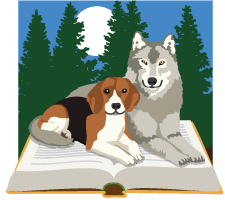


 Sally
Sally































